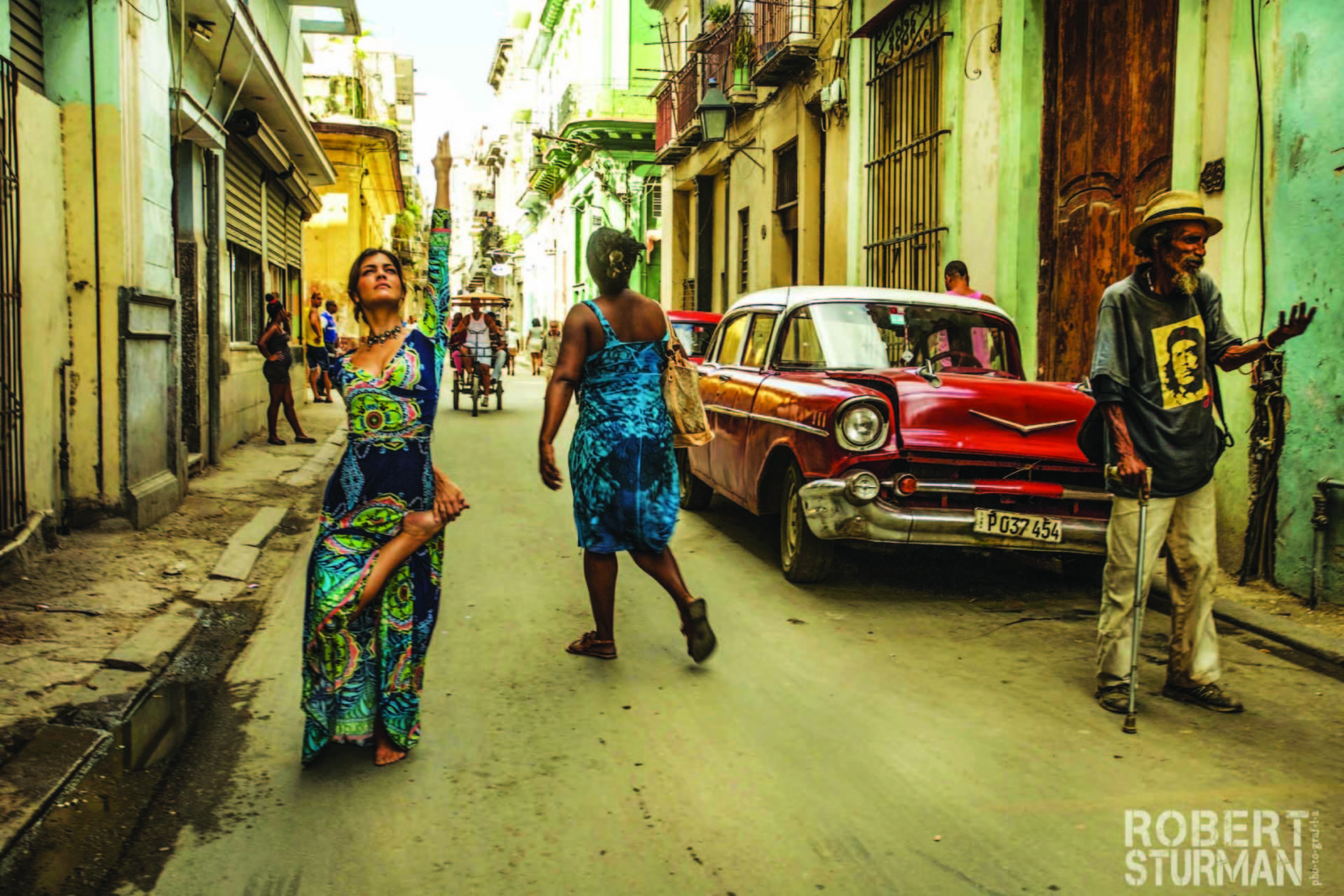Robert Sturman Bridges a Cultural Divide

Eryn Kirkwood is a published author and yoga teacher in…
“Every picture tells a story . . .”—so goes the saying.
Indeed that is the case with this composition by Robert Sturman. If the man holding the camera is a storyteller, then this esteemed photographer is a master creator.
Sturman has made it his mission to travel throughout the world, using yoga as the foundation upon which to tell the story of “humanity’s longing to reach our full potential.” This mission has taken him across countries and nations, inside prisons, and among African slums, along the foothills of Kilimanjaro, and into the bustling streets of Rome, London, and New York. It is a mission that has recently taken him to Cuba—a nation that, at least historically, has told a story of political unrest and cultural divide, a story that carries “an emotional texture of the time.”
Cuba captured Sturman’s heart long before his integration of photography and asana. So, “when Obama made it clear that the United States and Cuba would begin a new relationship,” he says, “it felt like it was time to return.” With the intention to “combine the humanitarian cultural concepts,” portray the hope of new beginnings, and celebrate the restoration of diplomatic relations—Sturman initiated what he’s called “The Cuba Libre Yoga Project.”
Robert has been snapping shots from the age of 14, when his father dropped him off at boarding school and gave him his first camera. Young Sturman asked his dad what he was supposed to take pictures of; it’s obvious his father’s response directs Sturman’s work even today: “[Take pictures of] anything you love,” his dad said. With love being somewhat of a moving target, holding space in infinite situations and taking shape in innumerable dimensions, so, too, has Sturman’s photography developed alongside the passions and intentions he’s cultivated.
“Little did I know this advice would mark the beginning of a lifelong romance.”
Which brings us here, to the present, in awe of his unique portrayal of asana and prolific blend of his love for the art and deep respect for the practice.
When Robert took his first yoga class at age 18 (attending only sporadically until he was about 30), the marriage of self-destruction and creative brilliance hummed alongside his artistic development. His mentors and heroes in the world of art led lives spotted with struggle and desperation—but that wasn’t to be his story. A moment in Italy made Sturman realize it was his duty to paint a picture of humanity, with all of its textures and complex emotional layers, and that to best fulfill this duty, he’d have to live with dignity and self-respect. Then, yoga stepped up to the plate.
“Throughout the entire history of art,” Sturman says, “I have never seen a figure as sincere and filled with heart as the yogi is.” He continues, “The human heart, when truly open, swims freely through all ideological conditioning. Yoga, from my perspective . . . is an expressive figurative poetry—a language of hope—of reaching towards the light, the heavens, possibility.”
This dichotomy, the tortured artist and the creative soul, informs the relevance of Sturman’s work today, in his representations of humanity through the poetry of yoga asana. Reflecting on his favourite image, Sturman says, “to me it embodies everything—from a tear and a smile, to the agony and the ecstasy. Within the broken heart of humanity, there is light, there is hope.”
His most recent project captures the poetic beauty of Cuba, with its 1950s cars, people in the streets, historical architecture and murals, and salsa dancing in Havana; but beneath the spirit of a vibrant nation are layers of potential political unrest. The issue of cultural appropriation has entered the conversations held within yoga circles in the west. We wondered if Sturman sensed any of that tension in Cuba, whether our western influence had penetrated Cuban culture and, if so, how to redirect our tendency to dictate towards recognizing the beauty of diversity. According to him, the solution is to “go with a humble willingness to learn about the other culture, to share yoga, to support the people.”
“This is the art that catches my eye over and over again. The decisive moment in the global streets in which the poetry of everyday life meets the poetry of yoga.”
Beyond gender and language and time, balanced evenly on both sides of the cultural divide, time and again we see the profound capacity of yoga to transcend allboundaries and tap into the essence of a loosely defined concept of humanity. In no uncertain terms, we are all one.
What's Your Reaction?
Eryn Kirkwood is a published author and yoga teacher in Ottawa, Ontario. Her book, Strong Body, Calm Mind has inspired many of her students and readers with practical ideas on how to handle life's ups and downs with grace, gratitude, and some humour. Learn how others have benefitted from Eryn's teaching, writing, and custom online yoga programs at ErynsYoga.com.






















